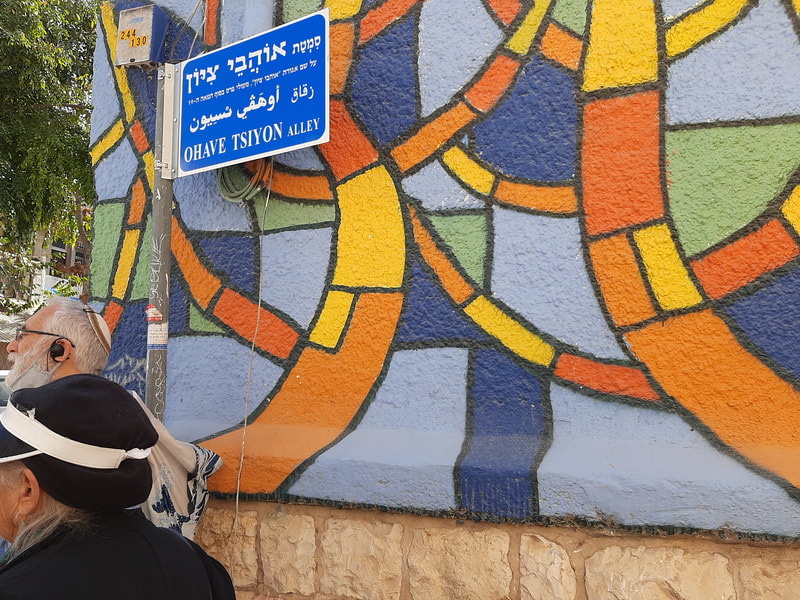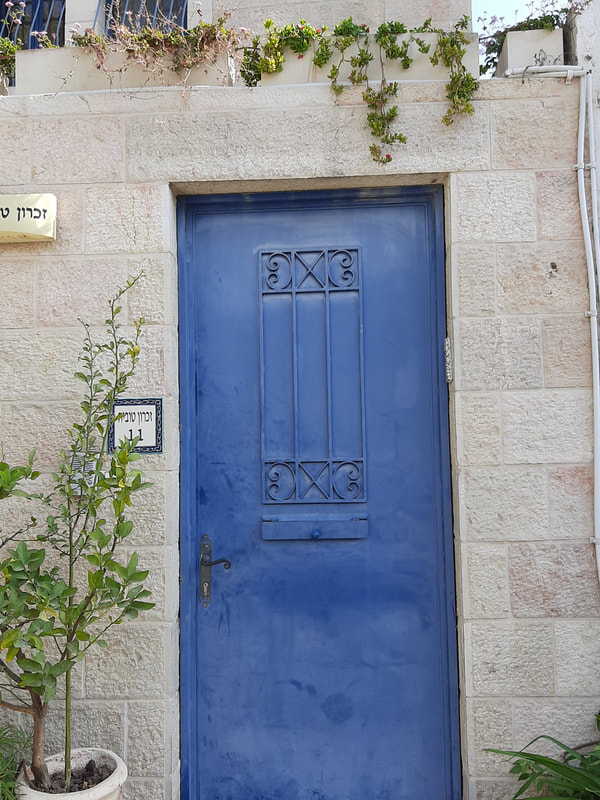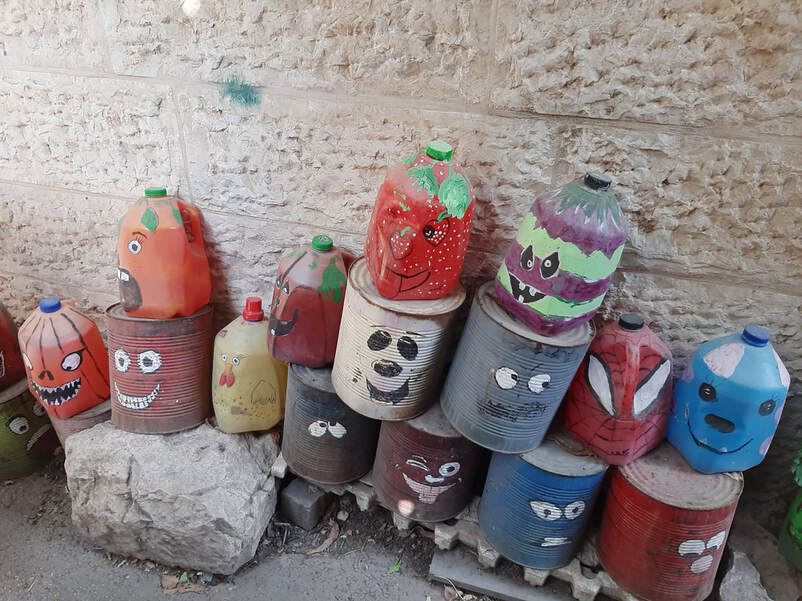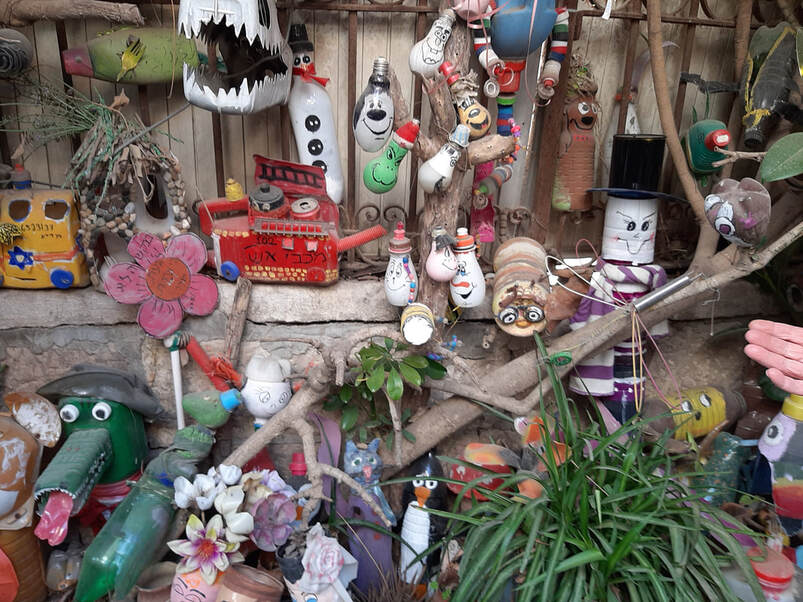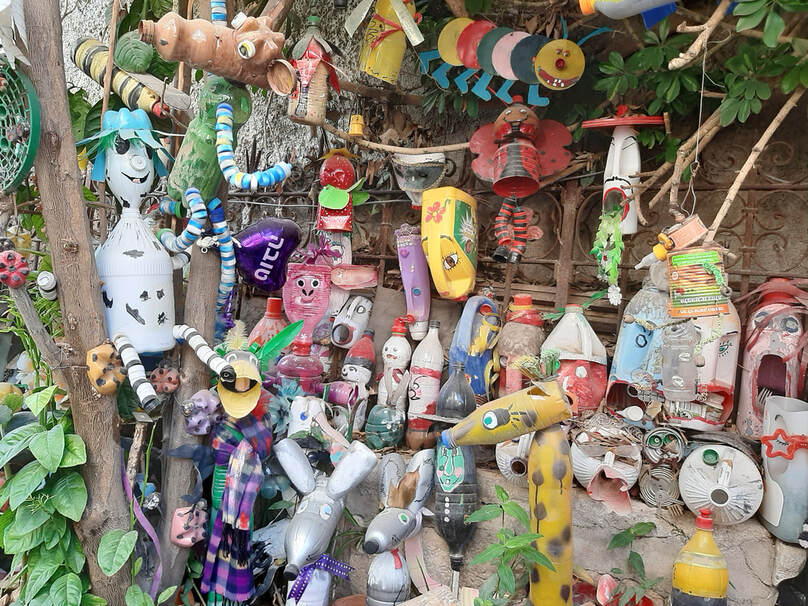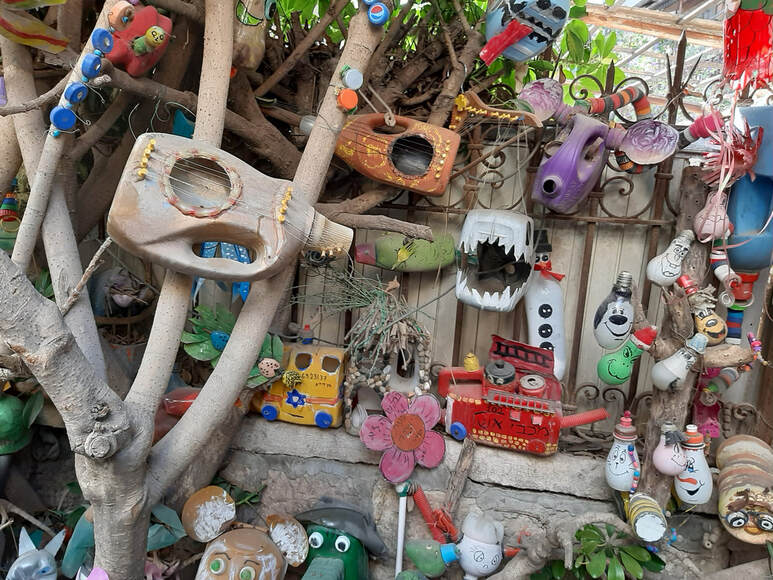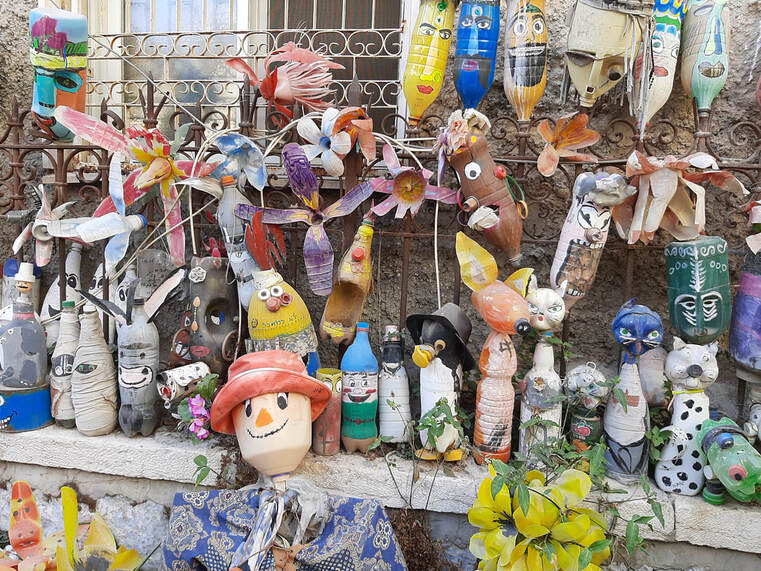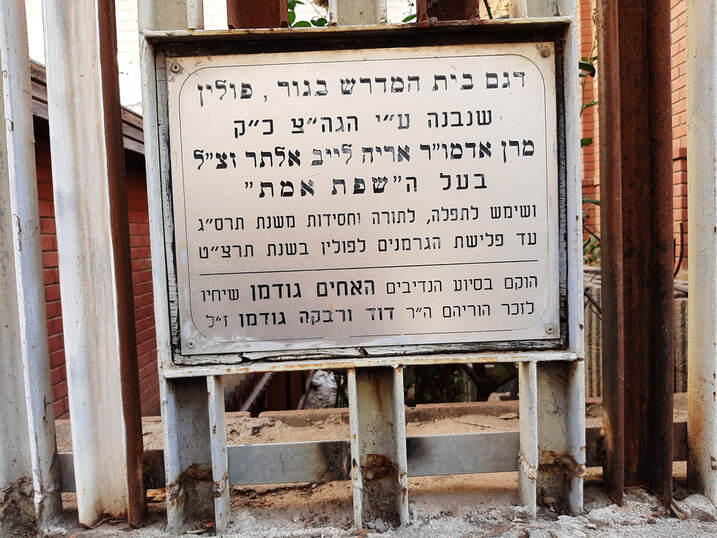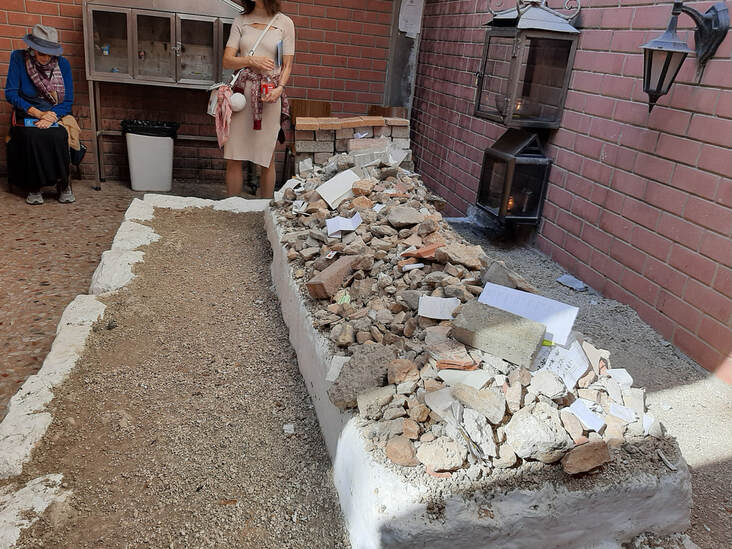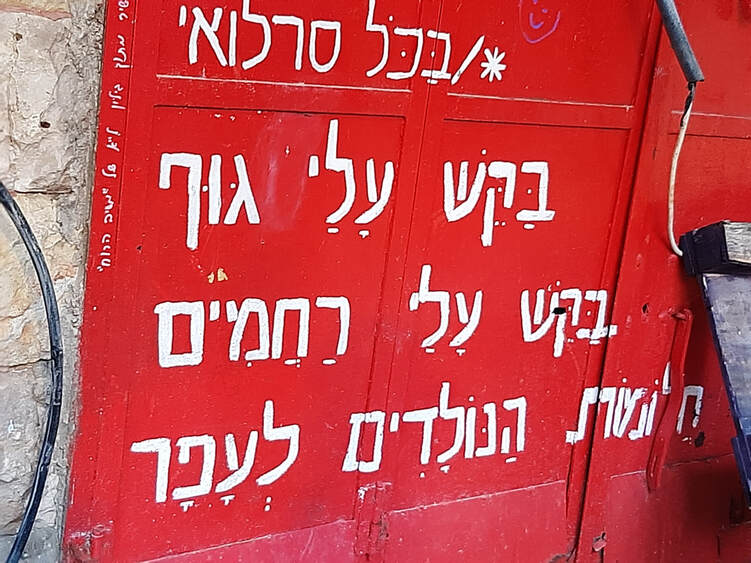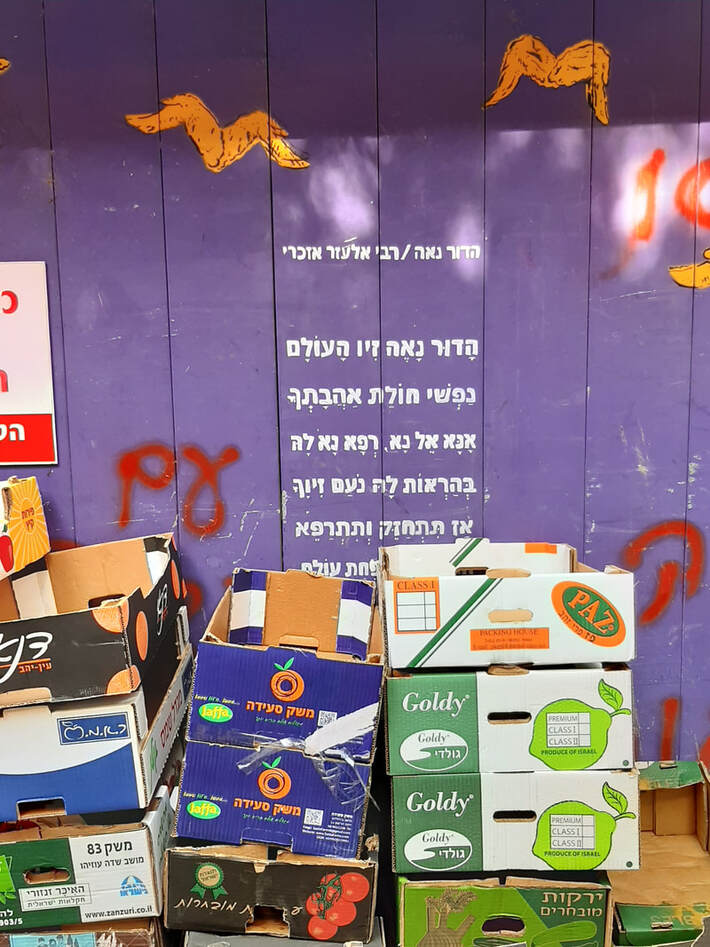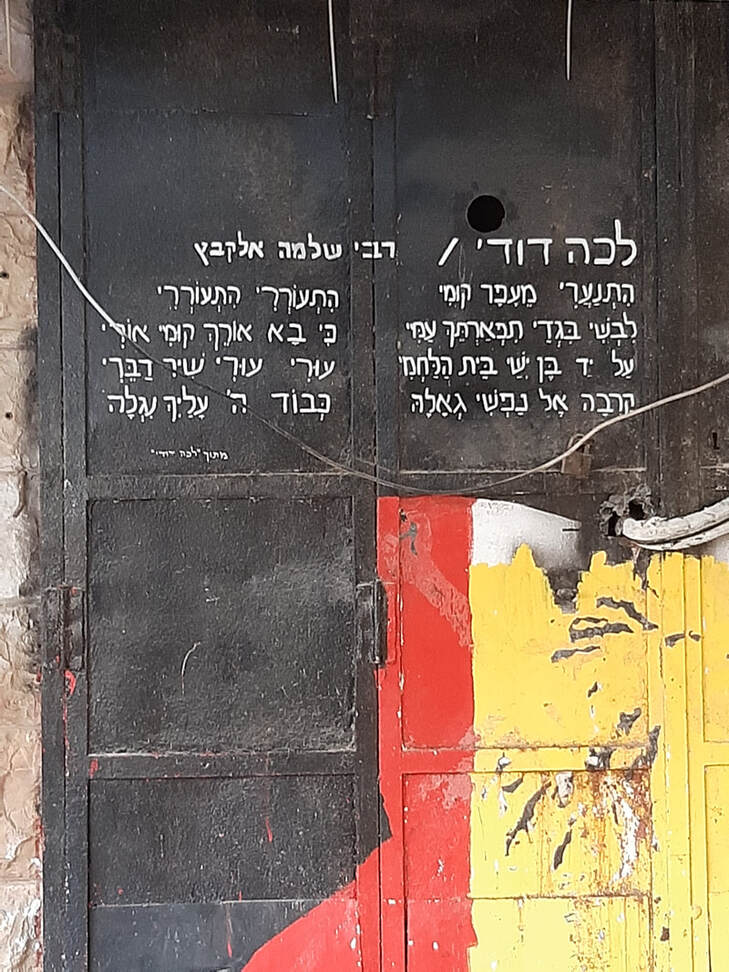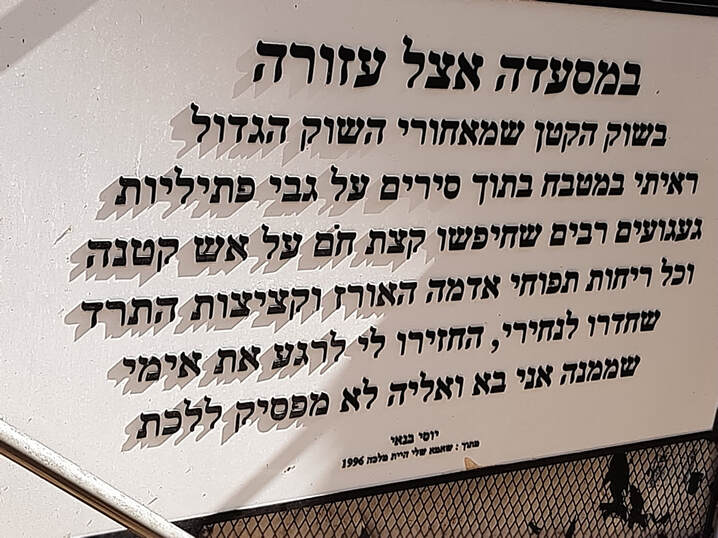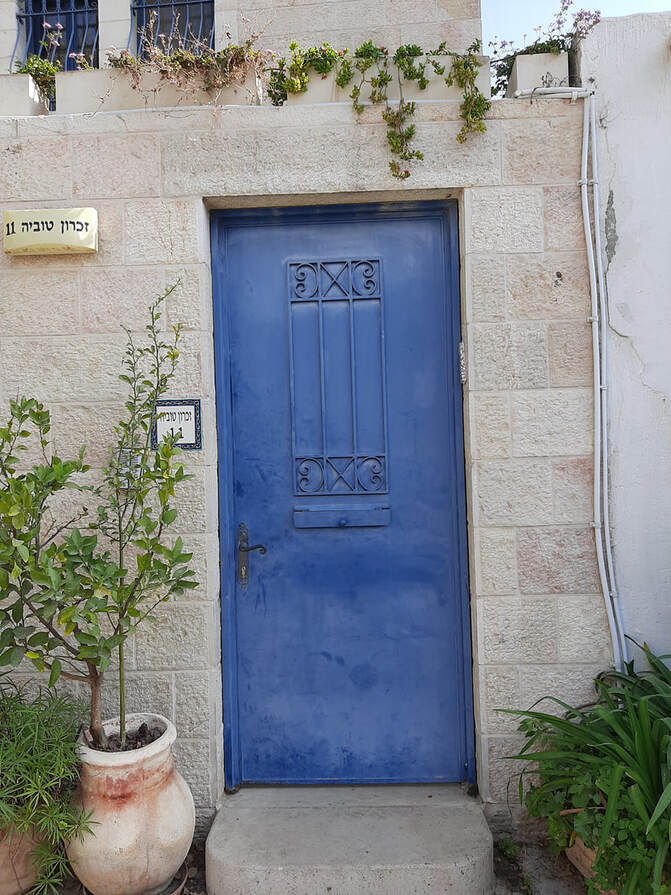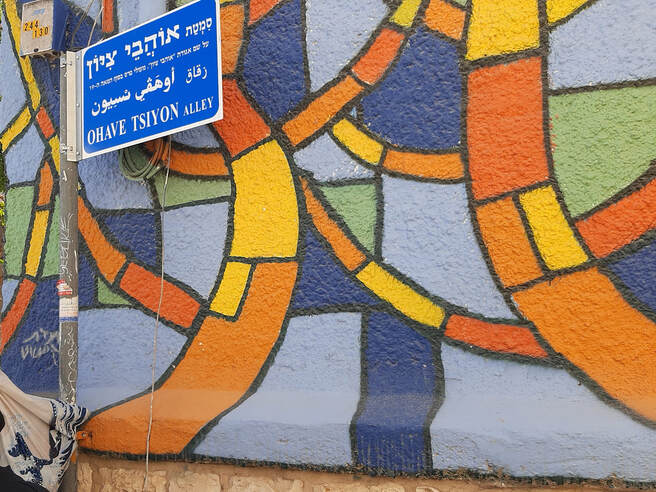TOUR OF MACHANE YEHUDA
& NACHLAOT
JERUSALEM
16 NOVEMBER 2021
When you think of Jerusalem’s Machane Yehuda market,
you may think of the luscious fresh vegetables and the delicious, juicy fruit.
You make think of freshly baked rolls, pitot and other baked goods.
You may think of the stalls selling every kind of pickle imaginable
and other stalls selling dried fruit and roasted nuts –
cashews, almonds, pistachios, macadamias and much more.
You may think of the stores and stalls selling household goods or clothes.
Almost anything you want, you can find in the alleys of the Machane Yehuda market.
Yet, when I went on a tour-cum-poetry reading / book launch for
Walking Jerusalem: Poems for Tour Guides and Others
(ed. Ruth Schiller & Wendy Dickstein)
on Tuesday, 16 November, I was totally surprised at what I saw
and photographed – not the colorful fruit and vegetables
not the merchants who proclaimed their wares for all to hear
or the housewives who were looking for the best buys
but the photographs you see below.
Many thanks to Felice Miryam Kahn Zisken and to Ariel Fogelman for their help with the English translations.
For more details of Walking Jerusalem: Poems for Tour Guides and Others:
https://jeruthalem.com/blog/
you may think of the luscious fresh vegetables and the delicious, juicy fruit.
You make think of freshly baked rolls, pitot and other baked goods.
You may think of the stalls selling every kind of pickle imaginable
and other stalls selling dried fruit and roasted nuts –
cashews, almonds, pistachios, macadamias and much more.
You may think of the stores and stalls selling household goods or clothes.
Almost anything you want, you can find in the alleys of the Machane Yehuda market.
Yet, when I went on a tour-cum-poetry reading / book launch for
Walking Jerusalem: Poems for Tour Guides and Others
(ed. Ruth Schiller & Wendy Dickstein)
on Tuesday, 16 November, I was totally surprised at what I saw
and photographed – not the colorful fruit and vegetables
not the merchants who proclaimed their wares for all to hear
or the housewives who were looking for the best buys
but the photographs you see below.
Many thanks to Felice Miryam Kahn Zisken and to Ariel Fogelman for their help with the English translations.
For more details of Walking Jerusalem: Poems for Tour Guides and Others:
https://jeruthalem.com/blog/
We walked a little through Machane Yehuda Market and turned onto Moshe David Gaon Street
(Moshe David Gaon, educator, writer and Ladino specialist,
who made Aliya in 1909, was born in the Austro-Hungarian Empire in 1889
and died in the Land of Israel in 1958)
-- it is more like an alley, and to my utter amazement,
the following street-art greeted me:
(Moshe David Gaon, educator, writer and Ladino specialist,
who made Aliya in 1909, was born in the Austro-Hungarian Empire in 1889
and died in the Land of Israel in 1958)
-- it is more like an alley, and to my utter amazement,
the following street-art greeted me:
My friend, Esther Halpern, whose poetry is included in the anthology, sent me her poem inspired by these photos and I publish it here with her permission:
ODE TO JUNK ART
Esther Halpern
In a narrow alley near Jerusalem’s shuk
a magic wand turned junk into enchanting art,
that takes this city rambler by surprise.
A free exhibition by nameless artists.
Smiling lightbulbs swing in the breeze,
others grimace, objecting to my stare,
battered tin cans sprout plastic plants,
slim glass bottles jingle in a merry dance.
A pot-bellied bottle-gentleman
proudly sports his black top hat,
in a purple-striped shirt he mocks passersby
chuckling at the contrast behind my back.
High on the wall a monster’s teeth are poised
to devour me with gaping jaws,
it is only a jerrycan, you stupid – I laugh,
sculpted with patience and a sharp knife.
A placid penguin in black and white
admires the scene in his formal attire
next to a pink bewhiskered pussy cat -
or is it a squirrel searching for acorns?
The huge Halloween can, painted white,
startles me with holes for eyes,
behind its ghostlike, toothy grin
a blood-red tongue is partially revealed.
My legs protest; needing a rest
I follow the smell to a table and chair,
a steaming bowl of soup helps me relax.
Sipping the brew I watch the teeming shuk
before returning home, laden with goods.
ODE TO JUNK ART
Esther Halpern
In a narrow alley near Jerusalem’s shuk
a magic wand turned junk into enchanting art,
that takes this city rambler by surprise.
A free exhibition by nameless artists.
Smiling lightbulbs swing in the breeze,
others grimace, objecting to my stare,
battered tin cans sprout plastic plants,
slim glass bottles jingle in a merry dance.
A pot-bellied bottle-gentleman
proudly sports his black top hat,
in a purple-striped shirt he mocks passersby
chuckling at the contrast behind my back.
High on the wall a monster’s teeth are poised
to devour me with gaping jaws,
it is only a jerrycan, you stupid – I laugh,
sculpted with patience and a sharp knife.
A placid penguin in black and white
admires the scene in his formal attire
next to a pink bewhiskered pussy cat -
or is it a squirrel searching for acorns?
The huge Halloween can, painted white,
startles me with holes for eyes,
behind its ghostlike, toothy grin
a blood-red tongue is partially revealed.
My legs protest; needing a rest
I follow the smell to a table and chair,
a steaming bowl of soup helps me relax.
Sipping the brew I watch the teeming shuk
before returning home, laden with goods.
We continued on a little more until we came to Yehosef Shwartz Street
(Yehosef Shwartz, one of the first researchers of the Land of Israel in the Modern Era 1804-1865)
and we stopped outside the Gerrer Rebbe's house,
where this sign was posted in front of the building:
(Yehosef Shwartz, one of the first researchers of the Land of Israel in the Modern Era 1804-1865)
and we stopped outside the Gerrer Rebbe's house,
where this sign was posted in front of the building:
Model of the Bet Midrash in Gur, Poland
that was built by the holy Gaon,
Rabbi Arieh Leib Alter z”l
author of Sfat Emet
and served as a place of prayer and Hasidut
from 1902 until the German invasion of Poland in 1939
. . . . . . . . . . . . .
Built with the generous help of the Goodman brothers
in memory of their parents, Rabbi David and Rivka Goodman z”l
**********
We stepped inside and saw two tombs, the first, on the left, of the Gerrer Rebbe, Rabbi Avraham Mordechai Alter (HaRe’em, author of Imrei Emet) who died in 1948 and could not be buried on the Mount of Olives
because it was in the middle of the War of Independence
and the Mount of Olives was under Jordanian rule.
As you see, these tombs serve as a place of prayer, as well as the Beit Midrash, in the inner room
that was built by the holy Gaon,
Rabbi Arieh Leib Alter z”l
author of Sfat Emet
and served as a place of prayer and Hasidut
from 1902 until the German invasion of Poland in 1939
. . . . . . . . . . . . .
Built with the generous help of the Goodman brothers
in memory of their parents, Rabbi David and Rivka Goodman z”l
**********
We stepped inside and saw two tombs, the first, on the left, of the Gerrer Rebbe, Rabbi Avraham Mordechai Alter (HaRe’em, author of Imrei Emet) who died in 1948 and could not be buried on the Mount of Olives
because it was in the middle of the War of Independence
and the Mount of Olives was under Jordanian rule.
As you see, these tombs serve as a place of prayer, as well as the Beit Midrash, in the inner room
The Rebbe's son, Rebbe Pinchas Menachem Alter (the Pnei Menachem), who died in 1996,
requested burial next to his father.
Below, the photo of his tomb.
We stayed some minutes at the tombs and the Beit Midrash so that any of us who wished to pray
by the graves of these Zaddikim could do so.
requested burial next to his father.
Below, the photo of his tomb.
We stayed some minutes at the tombs and the Beit Midrash so that any of us who wished to pray
by the graves of these Zaddikim could do so.
We walked through the market and soon made a turn into a yard containing cartons and wooden crates
behind the Iraqi Market. This quiet yard was one of our many spots for stopping
and reading our poems from the anthology.
This short poem by Bakol Serloi, from the 31st booklet of Mashiv HaRu’ach, is displayed on one of the shutters:
behind the Iraqi Market. This quiet yard was one of our many spots for stopping
and reading our poems from the anthology.
This short poem by Bakol Serloi, from the 31st booklet of Mashiv HaRu’ach, is displayed on one of the shutters:
Pray for me, for body
pray for me for compassion
dreams that are born from dust
***********
Below, printed on a shutter is the second stanza of the poem, "Yedid Nefesh"
that is sung in many homes during the Third Shabbat Meal
written by the sixteenth-century kabbalist, Rabbi Elazar Azikri.
I am not sure, but I think the orange-gold flying creatures depict angels.
pray for me for compassion
dreams that are born from dust
***********
Below, printed on a shutter is the second stanza of the poem, "Yedid Nefesh"
that is sung in many homes during the Third Shabbat Meal
written by the sixteenth-century kabbalist, Rabbi Elazar Azikri.
I am not sure, but I think the orange-gold flying creatures depict angels.
On another side of the yard this poem by Amir Gilboa is printed on a door:
Jerusalem my city,
I wanted to say out loud
the words I whisper to her heart
that my ears will also hear
the rustling of my heart
***********
On yet another shutter, stanzas from the poem, Lecha Dodi,
which is sung on Friday night in welcome of the Shabbat in synagogues across the world,
written by the sixteenth-century rabbi and kabbalist, Shlomo Alkabetz
I wanted to say out loud
the words I whisper to her heart
that my ears will also hear
the rustling of my heart
***********
On yet another shutter, stanzas from the poem, Lecha Dodi,
which is sung on Friday night in welcome of the Shabbat in synagogues across the world,
written by the sixteenth-century rabbi and kabbalist, Shlomo Alkabetz
We walked through more alleys of the market,
until we came to the Azura Restaurant,
a restaurant frequented by the Israeli actor, singer and poet, Yossi Banai, who died in 2006.
Outside the restaurant, we read more of our poems in the anthology
Below, on the large sign at the side of the restaurant
is a poem from his book, When My Mother was a Queen, 1996
until we came to the Azura Restaurant,
a restaurant frequented by the Israeli actor, singer and poet, Yossi Banai, who died in 2006.
Outside the restaurant, we read more of our poems in the anthology
Below, on the large sign at the side of the restaurant
is a poem from his book, When My Mother was a Queen, 1996
Azura Restaurant
In the little market behind the big market
I saw in the kitchen inside the pots on kerosene burners
many yearnings that searched for a little warmth on a small flame
and all the aromas of potatoes, rice and spinach cutlets
that penetrated my nostrils, and for a moment returned my mother to me
from whom I come and to whom I do not stop going.
*******
In the little market behind the big market
I saw in the kitchen inside the pots on kerosene burners
many yearnings that searched for a little warmth on a small flame
and all the aromas of potatoes, rice and spinach cutlets
that penetrated my nostrils, and for a moment returned my mother to me
from whom I come and to whom I do not stop going.
*******
We continued our tour through the adjacent neighborhood, Nahlaot,
built in the late nineteenth and early twentieth century,
much of its style akin to the Old City with its narrow alleys, arched windows and inner courtyards.
We stopped on Rehov Zichron Tuvia.
An Israeli public personality, Rivka Babai, lived on this street,
her home and plain front door unmarked for the sake of privacy,
and next to her home, I was attracted to this lovely front gate and the greenery:
built in the late nineteenth and early twentieth century,
much of its style akin to the Old City with its narrow alleys, arched windows and inner courtyards.
We stopped on Rehov Zichron Tuvia.
An Israeli public personality, Rivka Babai, lived on this street,
her home and plain front door unmarked for the sake of privacy,
and next to her home, I was attracted to this lovely front gate and the greenery:
This building has obviously been gentrified.
******
From there, we continued on, passing Ohavei Zion Synagogue and the art deco on its outer walls,
created by Urban Deco
******
From there, we continued on, passing Ohavei Zion Synagogue and the art deco on its outer walls,
created by Urban Deco
"Peek through the window" our guide, Ruth Schiller, suggested.
"You'll see the synagogue's stained glass window, which gave its inspiration to these walls."
And each of us in turn peeked through the window to gain a glimpse of the stained glass,
which the stone walls copy.
*******
"You'll see the synagogue's stained glass window, which gave its inspiration to these walls."
And each of us in turn peeked through the window to gain a glimpse of the stained glass,
which the stone walls copy.
*******
We walked on to Rehov Gilboa; Israel's fifth president, Yitzhak Navon, was born on this street.
A little past the Sephardi Synaguge
I saw this lovely entrance:
A little past the Sephardi Synaguge
I saw this lovely entrance:
On this street our tour ended.
Even though I have shopped in Machane Yehuda for over fifty years,
and even lived in another section of the Nahlaot neighborhood for four years,
I had never before known of the existence of these magical corners
of my precious city.
Even though I have shopped in Machane Yehuda for over fifty years,
and even lived in another section of the Nahlaot neighborhood for four years,
I had never before known of the existence of these magical corners
of my precious city.
